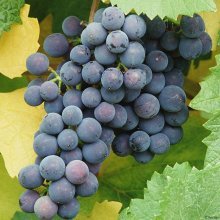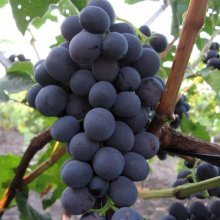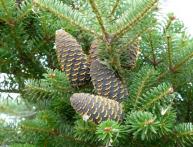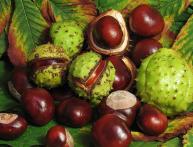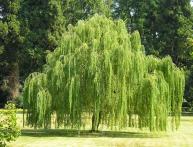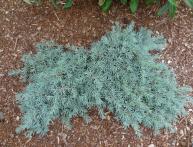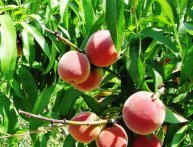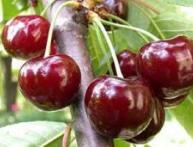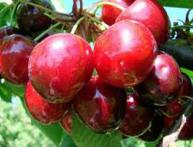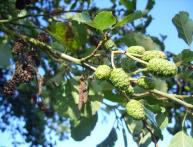Northern sweet grapes: description of the variety and features of its cultivation
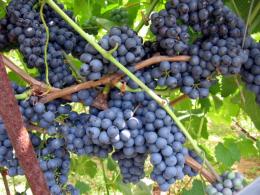
Traditionally, grapes are considered a heat-loving crop that does not have very good winter hardiness. Many varieties, when grown in northern regions, require good shelter for the winter. However, over several hundred years, forms have been obtained that are highly tolerant to low temperatures. Grape Northern sweet is one of these frost-resistant types of cultivated grapes.
Content:
History of the variety
The origin of the variety is not known exactly. According to one version, its author was Ivan Vladimirovich Michurin himself. Indeed, at one time the famous breeder worked hard to promote grapes to the north. He obtained the following varieties:
- Northern white
- Arctic
- Korinka Michurina
- Russian Concord
- Seedling Malengre
- Black sweet
However, there is no information about grapes called northern sweet among the Michurin varieties. Further study of the issue of the origin of the variety suggests that in 1936, working on the development of frost-resistant varieties, Michurin’s followers, breeders Ya. I. Potapenko, in collaboration with E.I. Zakharova crossed the Michurin Seedling Malengra with the Amur grape.
The result of this work was the Northern variety. Perhaps later the word sweet was added to the name of one of the seedlings of this variety.
Perhaps, in addition to Michurin varieties, varieties from the Pinot group were also used during its breeding, most likely Pinot black or Pinot noir. Since the clusters of the northern sweet are similar in shape to the clusters of these famous wine varieties. Some lovers also note the similar taste of the berries.
Pinot itself does not have good yields in cool climates, but if Amur grapes or another local variety were used in breeding work with them, then it could well result in not only a frost-resistant, but also a productive form. There is a version that Northern Sweet is an autochthonous technical variety. The famous winegrower M.F. Abuzov gave a description of the Northern Sweet variety in his books.
Northern sweet, variety description
The shoots of northern sweet grapes are distinguished by their great growth vigor. The vine is characterized by good ripening. This provides high winter hardiness to the bushes. Northern sweet tolerates low temperatures down to -30 degrees. Northern Sweet is a technical variety with a medium ripening period.
For the berries to ripen from the moment the buds open, the variety needs about 130 - 135 days. In the southern regions, harvesting begins at the end of August - the first ten days of September. In the conditions of the Moscow region and more northern regions, the berries ripen by September 15 - 20.
The brushes are moderately dense, weighing from 80 to 120 grams. The berry is round. Weight is no more than 1.5 g, although under favorable conditions it can be 2 g. The color of the berries is dark blue or blue-violet, with a waxy coating on the skin. The skin is strong, but rather thin. In the southern regions, the sugar content is high, from 23 to 25%.
With an acidity of 6-7 g/l.In more northern regions, acidity can be higher and reach 8 - 11 g/l, while the sugar content is no more than 19 - 21%. The pulp is juicy, sweet and sour, the taste is quite harmonious. The separation of seeds from the pulp is satisfactory. The advantages of the northern sweet variety include:
- productivity
- frost resistance
- good aging shoots
- high resistance to oidium and other diseases
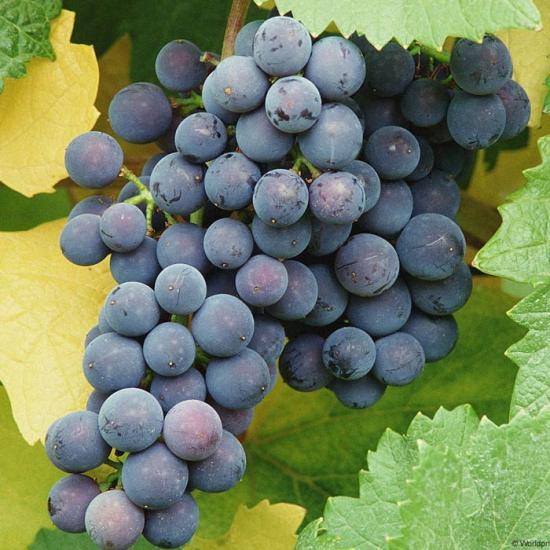
As a disadvantage, it is necessary to note the deterioration not only of taste, but also of yield due to lack of water. Despite the fact that many amateur winegrowers note the ability to withstand frosts down to -36, still in the northern regions, as well as in the Urals and Siberia, it is better to grow under light cover or lay the vines on the ground. They will be covered by fallen snow.
The harvest of northern sweet berries can be a good basis for aged homemade wine with a rich, pleasant taste. The climate of most regions of the country is characterized by fairly short and cool summers, few sunny days and low negative temperatures in winter. To get a harvest in regions with such a climate, you need to know about some secrets of growing northern sweet grapes.
Features of growing Northern sweets
If a grape seedling is purchased in early spring, then you should not rush to plant it in the ground. It is necessary to wait not only for thawing, but also for the soil to warm up at a depth of 0.5 - 0.6 meters. As a rule, this happens no earlier than the last days of May - the first ten days of June.
Until this time, Northern Sweet seedlings must either be buried or placed in containers against the southern wall, covering them from the wind.It is believed that the further north the grapes grow, the harsher the climate and weather conditions, the healthier the berry is and the tastier the wine or juice from it. However, in order grow Northern sweet grapes in such unfavorable conditions, you need to know some agrotechnical subtleties.
Video about Northern sweet grapes:
To ensure good and uniform heating of the soil at an air temperature of 18 - 22 degrees, you need to build a trench along the row of grapes on the south side of the plantings. This will ensure faster thawing of the ground in the spring, drainage of melt water and warming of the soil to the required depth.
If it is not possible to make such a trench, you can plant grapes in embankment ridges. The height of such ridges should be about 0.8 m, the direction should be from west to east. This placement adds 1-2 degrees of heat. In addition, the processes of laying fruit buds are more intense. Planting in ridges allows you to avoid waterlogging with excess precipitation and a more uniform distribution of sunlight.
However, this method also has a drawback. This is, first of all, the intensive consumption of nutrients by the vigorous shoots of the Northern sweet and their additional leaching from the soil by rain. To slow down these processes, the soil must be enriched with substances beneficial to grapes.
To do this, in the second half of May, about 10 kg of rotted manure is applied to each grape bush. It is laid out under bushes without embedding in the ground. This technique is especially effective when growing grapes in ridges. Manure spread on top of the ridge will provide the bush with the required volume of organic matter, first through the lower row of leaves, and after the soil warms up, through the roots.
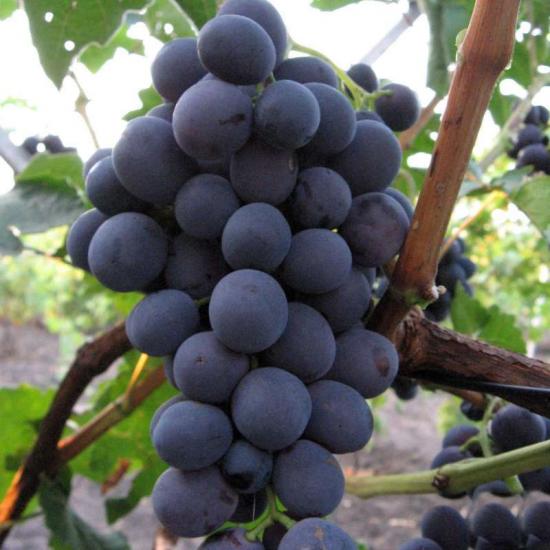
Many winegrowers believe that if a plot produces a harvest of 10 tons of grapes, then the same amount of manure needs to be added to the ground the next season. The rest of the agricultural technology for growing this varieties in unstable weather and temperate climates, it is no different from growing other technical varieties.

